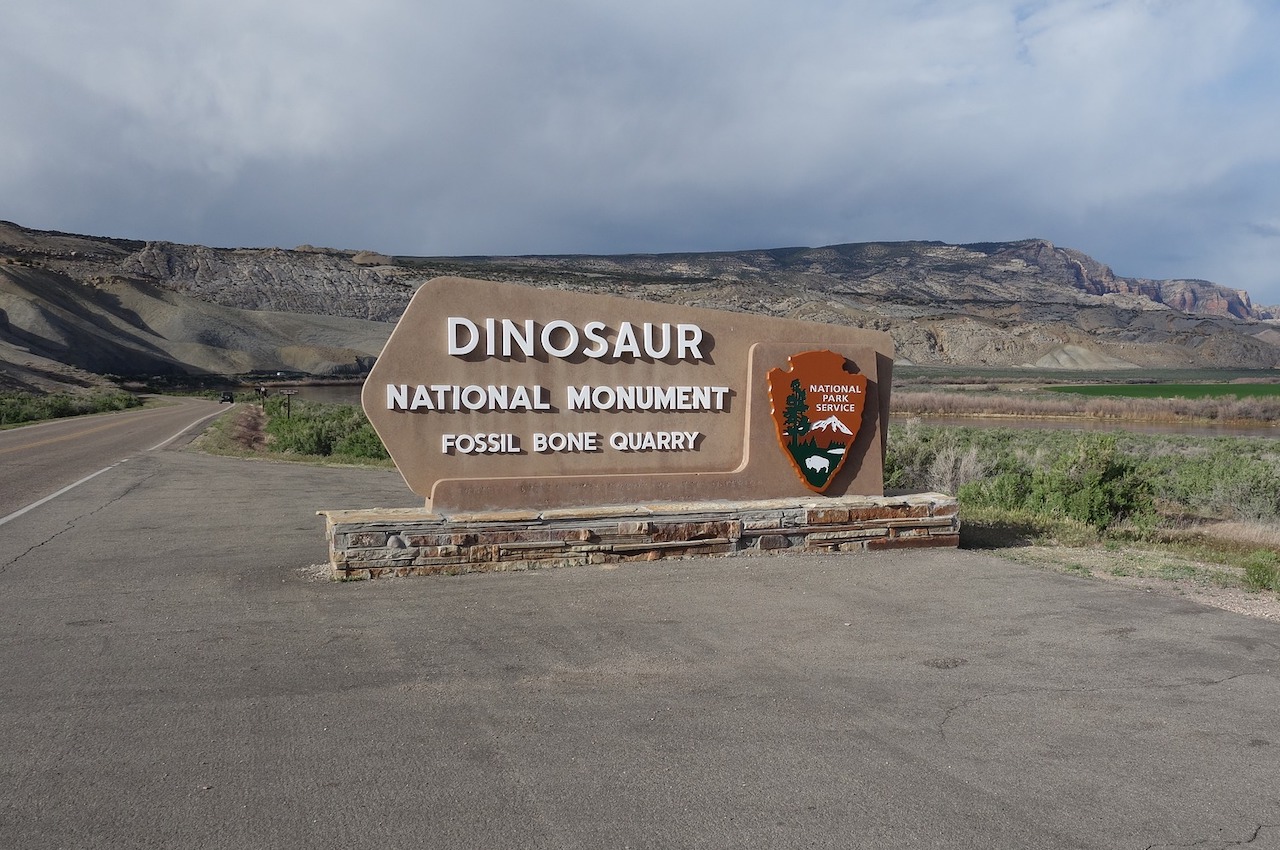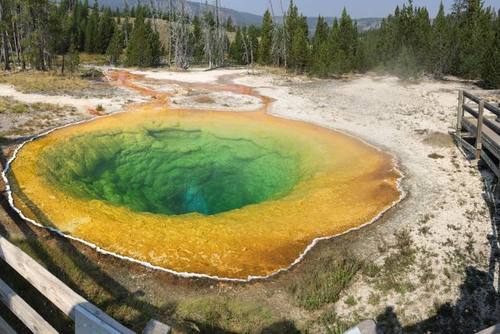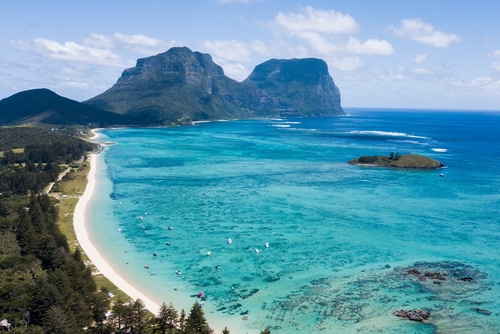But if you ask well-known travelers, some states are identified as hot spots for fossil hunting. In those spots, you can be one and get in touch with prehistoric creatures, whether preserved in museums or while you’re out walking by yourself.
So, for fossil enthusiasts and hunters, it’s a trip for the books to get to visit those locations. While dinosaurs and the mega creatures of the past are long extinct, the fossils you see can at least give you that close connection to the past. Take it one journey at a time, and soon you’ll be able to say you’ve gone through most – if not all of the best places to find fossils in the USA.
Who knows, you may even be able to bring home a souvenir or two.
If you’re interested in awakening that inner paleontologist in you, here are some sights in the USA identified as hot spots for prehistoric fossils.
1. Westmoreland State Park, Virginia
Something awaits for every traveler at Westmoreland State Park in Virginia. But, it’s even all the more exciting for those of you who wish to go fossil hunting. The best that you can find hidden in the Potomac’s riverbanks? Megalodon teeth. Yes, that’s proof in the fact that many years ago, the Megalodon existed.
A long time ago in history, the Potomac’s riverbanks was once a shallow ocean where the Megalodon, also known as a dino-shark, once swam. When the Megalodons became extinct, their bones and teeth were fossilized under the rocks. While the ocean disappeared, the layers of rock which contained the Megalodon’s teeth and bones started to appear.
2. Grand Canyon, Arizona
The Grand Canyon in Arizona is, without a doubt, one of the best places in the United States to find fossils. Embedded on its majestic rocks are the Precambrian algae fossils. That fact alone is more than enough to support the claim that the Grand Canyon is pretty much more than just pretty scenery. It has an abundance of fossils meant to excite even novice fossil hunters.
Just remember, however, that it’s illegal to collect any of the fossils at the Grand Canyon. You have to leave them behind for other scientists to study and discover. You may not be able to bring home a souvenir, but at least you can have photos to show of your fossil trip to the Grand Canyon.
3. Purse State Park, Maryland
The Purse State Park in Maryland is also fondly referred to as the Purse Area of the Nanjemoy Wildlife Management Area. While it’s only a remote little spot in the area, it’s not short of fossils.
Along the area, you can find fossils like the Cibicides shells. The shell is recognizable with its flat or dished-out evolute spiral side and an arched involute umbilical side.
If you wish to visit Purse State Park, you have to come prepared. The park doesn’t have day-use facilities. So, if you fancy a picnic, be sure to bring your gear.
4. Alaska Museum Of Science And Nature, Alaska
Alaska has strict fossil-collecting laws. If you’re around the state or you’re planning to visit, the most you can do is to check on what experts have done in the past. Spend a day at the Alaska Museum Of Science And Nature so you can see for yourself a collection of skeletons with models of different dinosaurs. There, you can see the Alaskan variety of the T.rex or the Albertosaurus.
To give you a hint, here are some of the exhibits you can come across at the museum:
Dinosaurs of Darkness. This exhibit allows you to enjoy a hands-on exploration of Alaska’s dinosaur finds.
Birds of a Feather. Here, you’ll come across an exhibit with the different Alaskan birds of today. In this exhibit, you can tell the dinosaur-bird connection.
Alaska Marine Life. In this exhibit, you can personally witness the skeleton of a Beluga whale that was washed up in Cook Inlet. Here, you’ll also gain knowledge of the ecology of present-day whales.
Bare Bones. This exhibit enables you to come across bones of different modern and ancient animals.
Ice Age Alaska. If you’re familiar with the story of the Ice Age, this exhibit gives you the closest experience to the real thing.
5. Florissant Fossil Beds National Monument, Florissant, Colorado
If you’re interested in the fossils of invertebrates, the Florissant Fossil beds have quite a collection. There are about 1,500 preserved species of insects and spiders, along with fish and other mollusks. At Florissant, you can go on a journey to many years back, reminiscent of a bygone era when those invertebrates lived.
Apart from getting up close and personal with those fossil collections, there are many other reasons why a trip to the Florissant Fossil Beds is worth doing. These include:
It’s a beautiful drive when you’re on the way to Colorado Springs;
It boasts of moderate to easy hiking trails, many of which aren’t yet crowded with tourists;
It opens you up to the sight of a fossil flying on a rock - being one of the richest fossil deposits in the world.
6. Big Brook Park, New Jersey
Another hotbed for fossils in the United States is the Big Brook Park in New Jersey. In case you aren’t aware of it yet, the North American continent’s very first discovery of a complete dinosaur skeleton was actually in New Jersey. Hence, the wide array of different fossil exhibits you can come across.
Some of the very few include:
- Saber-tooth salmon;
- Teeth and vertebrae of drum fish, goblin sharks, angel sharks, and mackerel sharks;
- Remains of a cretaceous marine lizard, the Mosasaurs;
- Belemnites, or squid-like cephalopods.
Before visiting Big Brook Park in New Jersey, it’s a good idea to do some background research first on the different kinds of fossils from those creatures. That way, you’ll have an idea of what you should be on the lookout for when you start hunting.
7. Ozark, Salem, and Springfield Plateau, Arkansas
Arkansas is also referred to as the Natural State. So, it’s not surprising how it’s known to be a rich deposit of many different kinds of fossils. Fossil collecting is possible in almost the entire Arkansas. But, a little background research before you go will help. While there are many geographical regions in the state for you to enjoy fossil hunting, the top three include the Ozark, Salem, and Springfield Plateaus.
The Ozark Plateau. This region is characterized by sedimentary rock deposits, mostly around shallow seas. This fact has made it the ideal place for many animals to live. The Ozark Plateau is also known to be one of the most fossiliferous regions in the state.
Salem Plateau. This region houses the oldest rock present, dating back to the Ordovician age. Common fossils found in limestones and dolostones are cephalopods, stromatolites, gastropods, corals, and crinoids.
Springfield Plateau. This region is composed of cert, limestone, shale, and sandstone, all dating back to the Mississippian period. Some of the most common fossil deposits present in those rock types include coral, gastropods, Bryozoa, and cephalopods.
8. Caspersen Beach, Venice, Florida
The beaches of Venice, Florida, are world-renowned for their soft, sandy white shores and beautiful sunsets. But did you know that Venice, Florida, has something else to offer? Its beaches at Sarasota County are also well known for many fossilized shark teeth, all embedded along the shore. Yes, if you’re lucky, you’re going to find quite a lot – something way beyond your usual shell picking.
If you’re lucky, one of the most prized fossil hauls comes from the Otodus megalodon. Most rightfully so, this region in Florida has also been nicknamed the ‘Shark Tooth Capital Of The World.’
9. Penn Dixie Fossils, New York
If you want to leave New York with a unique souvenir, then a visit to a fossil park is a must-do. In New York, one of those fossil parks is Penn Dixie Fossils. It's open from late April until late October, with an entrance fee of around USD $10. With that amount, you can find one of the most prized fossils, the trilobites.
If you’re lucky enough, you may even visit in time for the annual ‘Dig With The Experts’ event. During this time, you can come up close to scientific experts with more digging tools to help you identify and explain what your finds are.
At Penn Dixie Fossils, you’ll come across prehistoric crabs, snails, sea lilies, and many more. All are from the Middle Devonian Period. It means that the fossils are at least 300 million years old.
10. Dinosaur National Monument, Colorado
Colorado has strict laws against collecting fossils without obtaining a permit first. It's only at the Florissant Fossil Quarry, where you can pay to dig for both insect and plant fossils. Nevertheless, there are still many places in Colorado that fit the bill to find some fossils - without your chisel and brush.
One of those best places is the Dinosaur National Monument. When you’re traveling with young children, a visit to the Dinosaur National Monument is one for the books. There, you can roam where the dinosaurs once lived. You may be able to see some of their remains still embedded in the rocks.
Apart from following the trail of the dinosaurs, there are so many other activities your group can enjoy at the Dinosaur National Monument.
Those include:
- Go through some of the most popular hiking and biking trails;
- Have a picnic at one of the many scenic areas;
- Go fishing and horseback riding.
11. The Mammoth Site, Hot Springs, South Dakota
Around 28,000 years ago, this site was once home to a massive sinkhole. It formed the foundation of doom for the creatures that lived in the area. For example, wolves, short-faced bears, and American camels saw themselves trapped. But, this paleontological site is most famous for one mammal: the mammoth.
Rightfully named as such, The Mammoth Site in Hot Springs, South Dakota, is one of the world’s best spots for a preserved mammoth. Skeletons of the Columbian variety and the wooly mammoth are in full display for visitors to marvel in.
12. Caesar Creek State Park, Waynesville, Ohio
The Caesar Creek State Park in Waynesville, Ohio, has many fossils dating back to the Ordovician period. Some of those fossils include the gastropods, trilobites, and brachiopods. For as long as you have a permit from the visitor center, you will be permitted to collect fossils in the area.
If you want fancy camping with your family, there are campgrounds for you also to choose from. For the hikers, there are over 60 miles of hiking trails you can enjoy. The beach and the lake are also just a stone’s throw away – providing a place for swimming. It's a quiet site to be in, where you can enjoy the best of what fossil history and nature have to offer.
13. Fossil Park, Ohio
Rounding up this list is another wonder in Ohio. Over 375 million years ago, Northwest Ohio was still left underwater. At present, it’s not. But, this geographical transformation has brought up the presence of a rick rock quarry. It is where Fossil Park belongs to.
In the area, you can dig up some of its past – literally – where you’ll come across ancient coral and brachiopods. It's great for taking an afternoon walk while going through the trail with interpretative signs, so you’ll know just what kind of fossils you’ve picked up. Plus, it’s all free.
Now that you’re aware of those best places to find fossils, you could be on your toes, giddy to start planning that fossil-hunting getaway. But, before you immerse yourself in the experience, be sure that you’re aware of the fossil hunting laws and permits in place. It can differ from one state to another. So, be sure to include that in your planning process. Don’t just show up without a plan and start digging. The more respectful you are of the local community you’re hunting in, the more enjoyable and successful your fossil-hunting trip will be.








